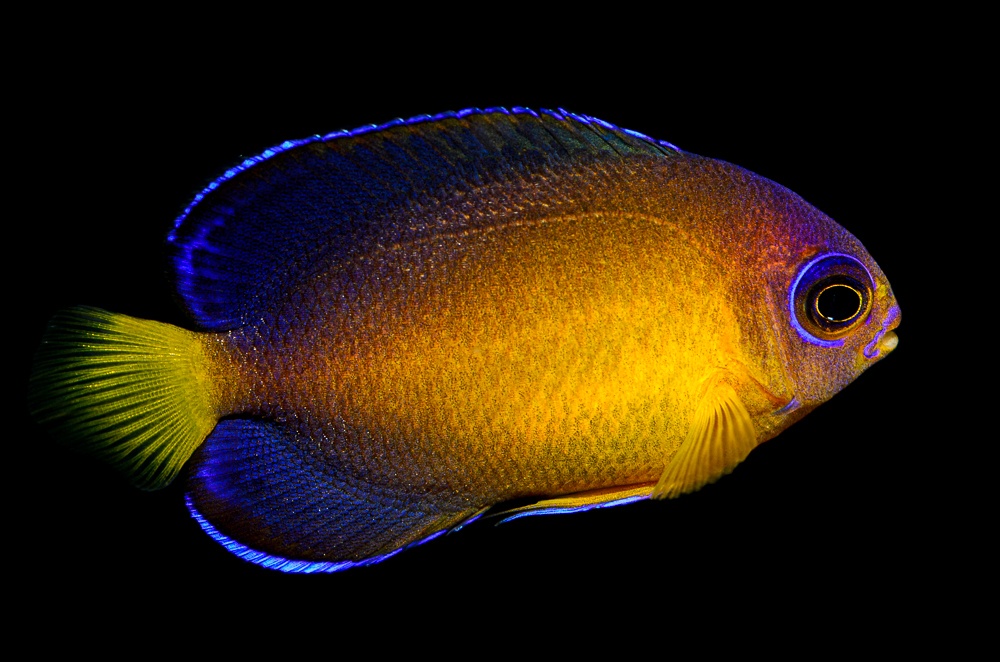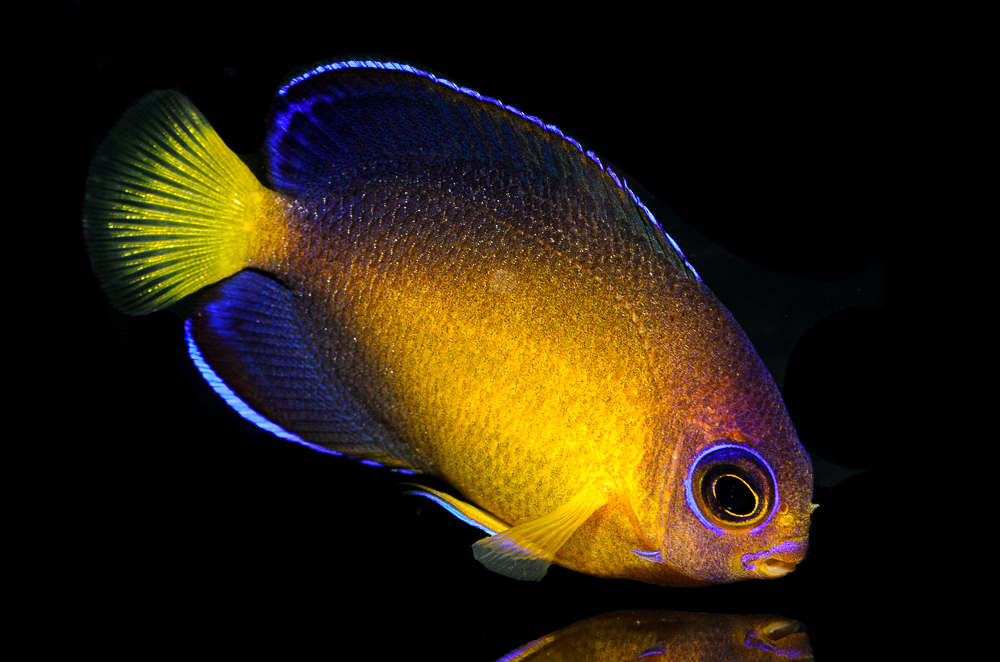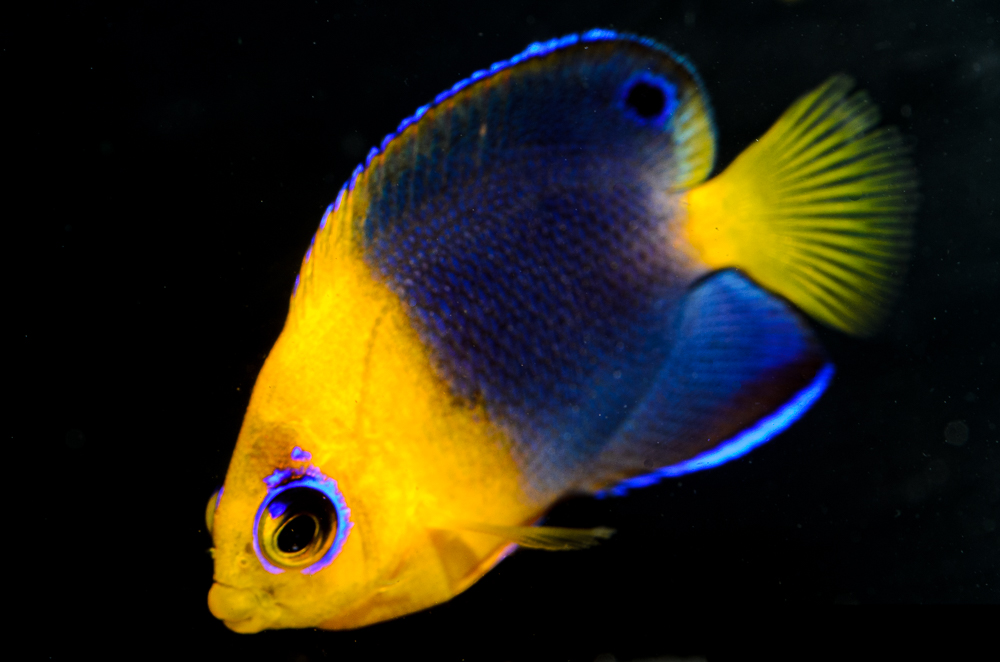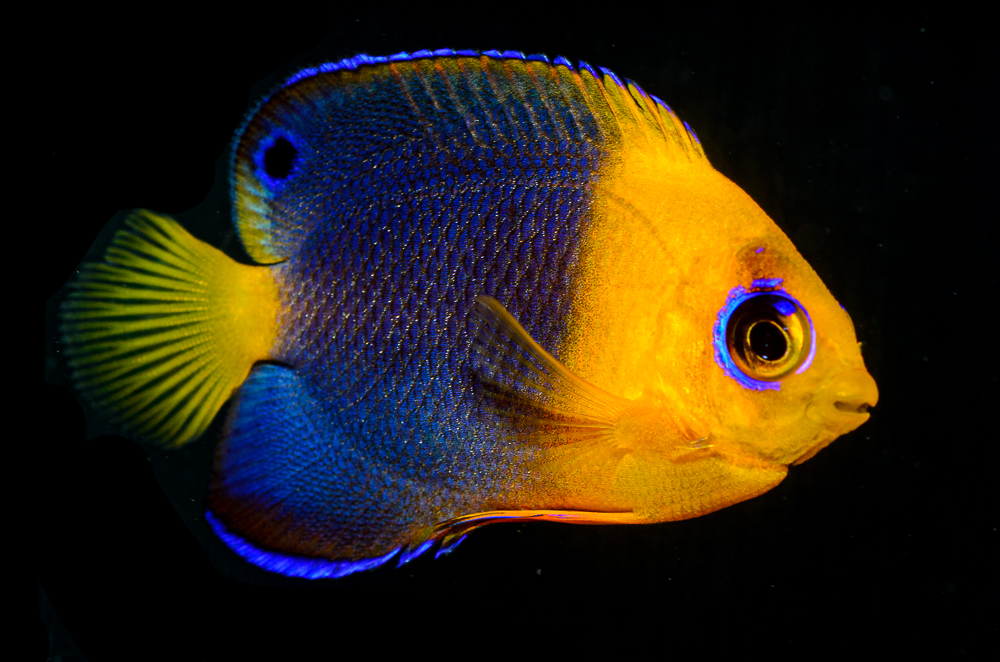Our regular visit to Wen-Ping Su and Bali Aquarich was long overdue. It never disappoints. As usual Mr. Su had a couple of surprises up his sleeves; he greeted us with two new hybrids of Centropyge dwarf angelfish.
Coral Beauty (Centropyge bispinosa) X Multicolor (Centropyge multicolor) Hybrids:

Since Mr. Su likes to mix a lot of species in a broodstock pond, he never really knows what he’s going to end up with. Once he hatches the eggs and raises the larvae, the guessing game starts. Once he knows what the hybrid is, knows it works, and that the results are interesting, only then does he isolate the broodstock to make a concerted effort to intentionally produce more.
This particular cross between the Coral Beauty and Multicolor Angelfishes basically looks like a yellow-tailed Coral Beauty with a blue eye ring at this point. Juvenile angelfish are always cute, but is this form more attractive than the original parental species?

Mr. Su has only managed to produce two individuals of this ultimately rare hybrid, and he’s not sure if he will produce them in the future. So we can expect their price to be quite high! Wild specimens of this hybrid have been collected before, showing a mix of the coloration from the parental species, but they are very rare.
Second Generation Cocos Island (Centropyge joculator) X Multicolor (Centropyge multicolor) Hybrids:

The second treat from our pilgrimage was second-generation hybrids between the Cocos Island (Centropyge joculator) x Multicolor (Centropyge multicolor) angelfishes. The two parents of these young fish were first-generation hybrids, which demonstrates that the initial hybrids are fertile themselves.
Since the two species belong to the same species complex they are easy to mix. They occur in different ranges, so natural hybrids are impossible to find.

The result is a pale version of the Centropyge joculator, with a head patch. Time will tell if the head crown will develop.
Pygmy angelfish are always cute. But I don’t really see the point of Multicolor’s hybrids in terms of whole fish coloration, since C. multicolor is one of the least-colorful angelfish. But Mr. Su’s target is to ultimately get the head “crown” pigmentation seen on some other angelfish. Time will tell if that works!




